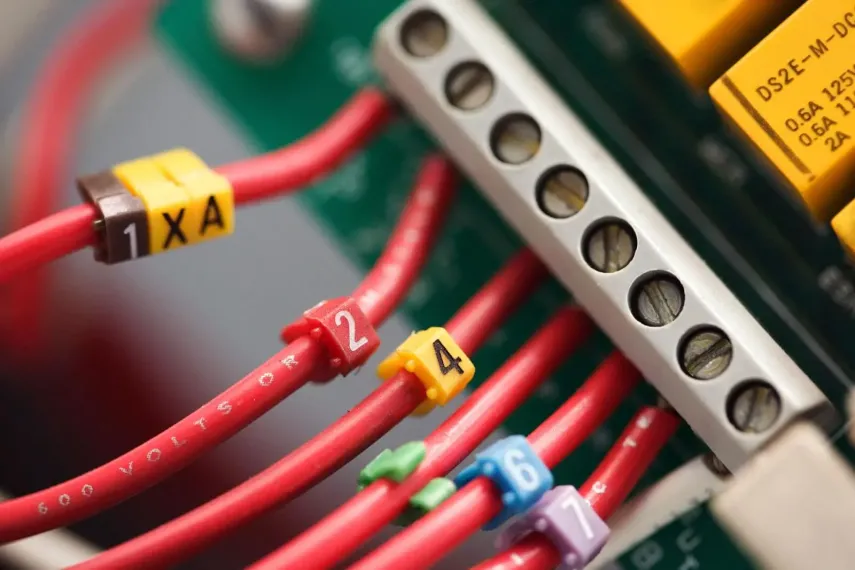Fire Alarm Cable is a specialized cable used in fire alarm systems. This cable facilitates the transmission of signals between fire detection devices and the control panel or other security equipment. The reliability and effectiveness of the fire alarm system depend on the quality and correct usage of the fire alarm cable. Such materials make it possible for the fire alarm to operate at a high level of efficiency!
Which Cable is Used in Alarm Systems?
The types of cables used in alarm systems can vary based on the specific requirements for communication between different sensors and devices. Different types of cables can be used for various alarm systems such as fire alarm systems, security alarm systems, CCTV systems. Here are some commonly used cable types for alarm systems:
Fire Alarm System Cable
For fire alarm systems, cabling typically adheres to NFPA standards. These cables feature attributes such as high-temperature-resistant insulation and smoke resistance. Generally, 2-core or 4-core cables are preferred.
Security Alarm System Cable
Security alarm systems are typically low-voltage systems. For these systems, 2-core or 4-core cabling is commonly used. The cables serve the purpose of signal transmission and powering sensors.
CCTV (Closed-Circuit Television) System Cable
The cabling used for CCTV systems may include specially designed coaxial cables for video signal transmission. Additionally, in systems utilizing IP cameras, Ethernet cabling (such as Cat5e or Cat6) can be employed
Ethernet Cables
In alarm systems, Ethernet cabling is commonly used for data transmission. This cabling allows IP-based devices, such as IP cameras or network-connected sensors, to connect to the network.
Signal Cables
Low-voltage signal cabling is used for transmitting signals from sensors. This cabling ensures the secure and accurate transmission of low-voltage signals.
Multimedia Cables
If the transmission of audio and video signals is required within alarm systems, multimedia cabling can be utilized. This type of cabling can transmit audio, video, and data signals within the same cable.
What Are the Technical Specifications of Fire Detection System Cables?
Fire detection system cables should have specific technical specifications for security and durability. These features are crucial for the reliable use of cables in fire alarm systems. Having information about the common technical specifications of fire detection system cables enables the desired benefits to be obtained from these components.
The outer insulation material of a fire alarm cable should be resistant to fire conditions. High-temperature-resistant materials like PVC or LSZH are preferred. Additionally, cables with low smoke and gas emissions are prioritized to minimize the spread of smoke and harmful gases during a fire. The number of cores inside a fire alarm cable can vary based on the system’s requirements. Typically, 2-core or 4-core cabling is used. The core section is selected according to the signal power to be carried, and for stronger signals, cables with a wider cross-section can be used.
The maximum voltage and current values that a fire alarm system cable can carry should be specified. These values should be selected to meet the system’s power requirements and electrical needs. If cables are to be used in outdoor or challenging environmental conditions, they should be resistant to water, UV radiation, and other external factors. Additionally, for indoor use, high resistance to humidity and heat is important. Cable durability during bending and twisting is crucial to ensure the cable’s long-term reliability and performance.
Protecting the cable from electromagnetic interference ensures the reliable transmission of signals. Therefore, protective shielding or insulation may be required against electromagnetic effects. It’s important for fire alarm system cables to have certifications and approvals that confirm compliance with specific safety standards. The color coding of fire alarm cables should also adhere to standards, ensuring proper installation of the cable.
What Is the Application Area of Fire Detection System Cables?
Fire detection system cables are used in the installation and operation of fire alarm systems. These cables are employed to transmit signals from fire detection devices to the control panel or vice versa. Fire detection systems are used in various types of buildings and workplaces, including commercial buildings, offices, shopping centers, factories, warehouses, hospitals, and more.
Fire detection cables are used in these spaces to detect fire hazards early and respond quickly. Fire detection systems can also be used in residential settings to reduce the risk of fires at home and provide a means for rapid intervention. These detection cables are employed to identify potential fire risks associated with machinery or facilities used in industrial facilities.
Hospitals, schools, and other public spaces are particularly sensitive areas to fire hazards due to the presence of large groups of people. Fire detection cables are used in these areas to ensure safety and enable rapid response during moments of panic. Fire detection systems are especially used in large vehicles, where fire alarm cables play a crucial role in early hazard detection and ensuring safe evacuation processes.
Data centers, where a substantial amount of electronic equipment is housed, are sensitive areas when it comes to fire hazards. Fire detection systems are used in such centers to protect the hardware and minimize data loss. Fire detection systems can also be used in outdoor areas or open-air events. Particularly in crowded events, these systems are employed as a preventive measure against fire hazards. In light of all this information, fire alarm cables always emerge as a product with a wide range of applications.
What Is the Role of Fire Alarm Cable?
The role of a fire alarm cable is to transmit information from fire detection devices (such as smoke detectors, heat detectors, etc.) to a central control panel or an integrated alarm system. When a fire alarm is triggered, the cable’s task is to transmit the information quickly and reliably.
How is a Fire Alarm Cable Installed and Connected?
Fire alarm cable is a component that should be installed professionally in a fire alarm system. Typically, the connections of detection devices and control panels must be done accurately, following the appropriate color codes and installation instructions.
